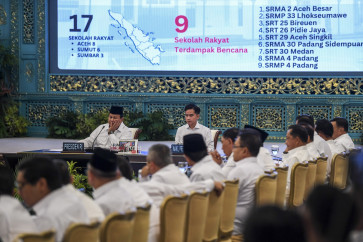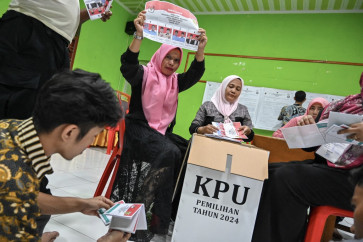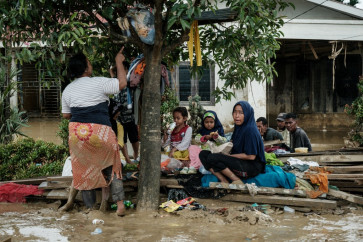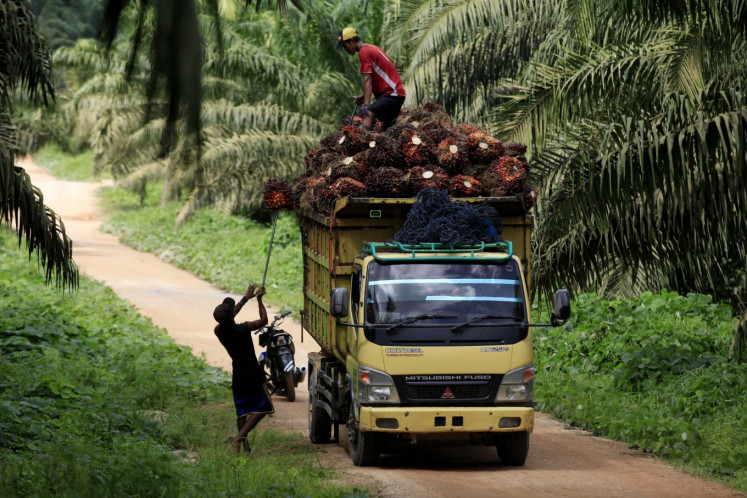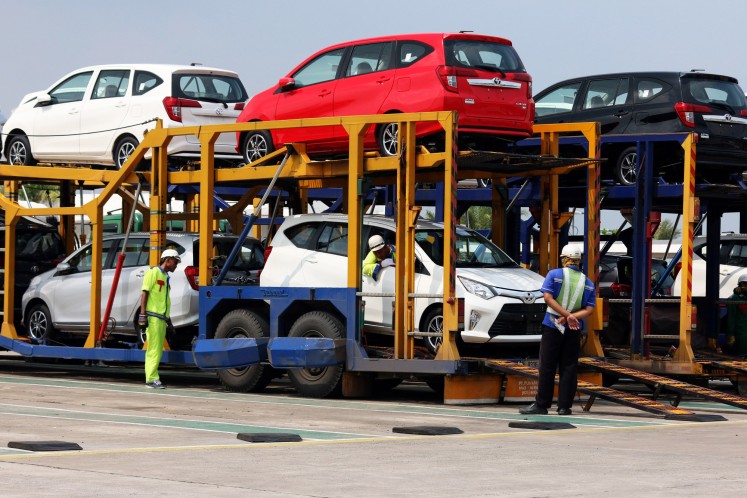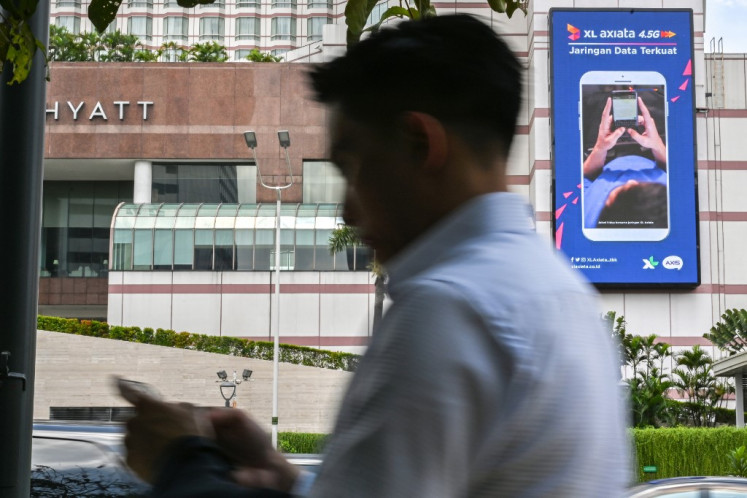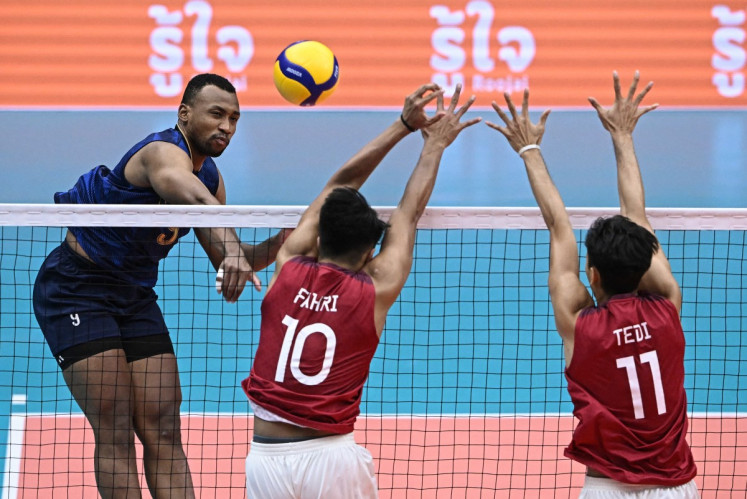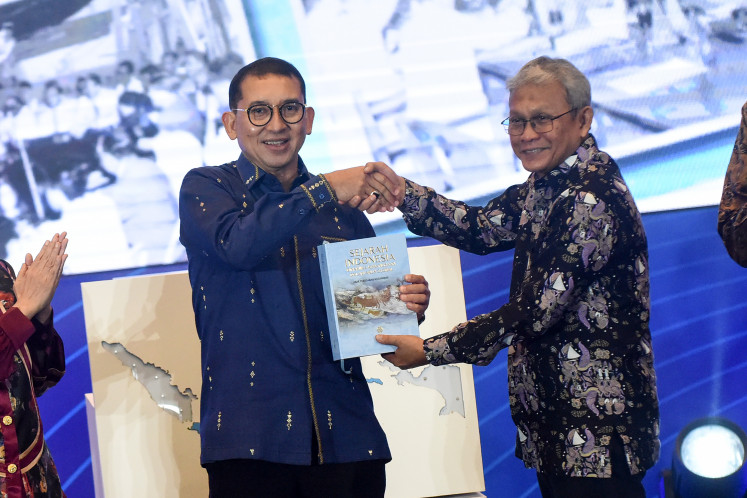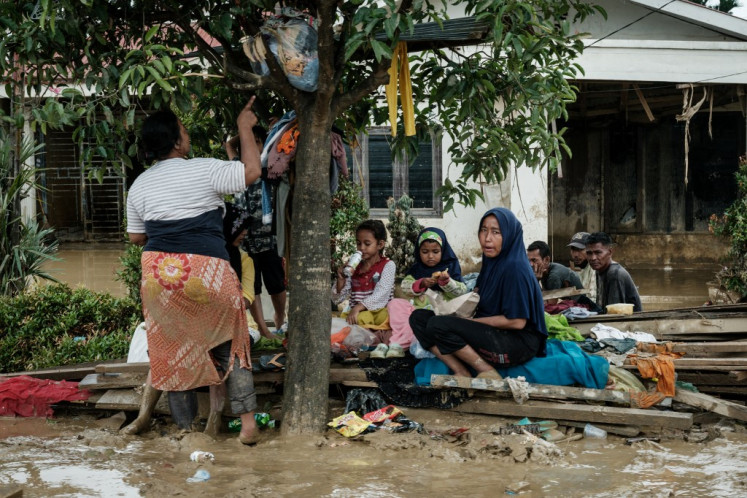Popular Reads
Top Results
Can't find what you're looking for?
View all search resultsPopular Reads
Top Results
Can't find what you're looking for?
View all search resultsPrototype Bandung LRT car unveiled
Future transit: Two residents leave a prototype of the Light Rapid Transit (LRT) Metro Kapsul on display in Bandung Square, West Java, on Thursday
Change text size
Gift Premium Articles
to Anyone
F
span class="caption">Future transit: Two residents leave a prototype of the Light Rapid Transit (LRT) Metro Kapsul on display in Bandung Square, West Java, on Thursday. The Metro Kapsul consortium displayed the train to gain input from residents and also introduce the locally made technology.(JP/Arya Dipa)
The prototype of a vehicle for Bandung’s planned light rail transit (LRT), called the Metro Kapsul, has been put on public display next to the city’s main square. The West Java capital plans to start construction on its inner city mode of mass transportation sometime this year.
PT Pembangunan Perumahan Infrastruktur, the subsidiary of state-owned construction company PT Pembangunan Perumahan, would keep the prototype, which was unveiled on Wednesday, on display until Sunday, said the firm’s general manager, Leonnardo Feneri said on Thursday. The measure was aimed at inviting input from the public.
The Metro Kapsul consortium comprises five companies, namely PT Teknik Rekayasa Kereta Kapsul for the engineering design, PT Kereta Kapsul Manufaktur for assembling production, PT Metro Putra Perkasa for motor system production, PT Indoserako Sejahtera for the control system and PT Pembangunan Perumahan Infrastruktur for the civil and structural work.
Unlike LRT technology in general, Leonnardo claimed the Metro Kapsul train would be highly efficient, as it would make use of the motor on the wheel. It is powered by electricity, which goes directly to the motor and moves the wheels. In other LRT systems, the electricity would go to the motor and then to the gears and to the car.
He went on to say that research and development for the Metro Kapsul LRT had begun 10 years ago, with the last three years focused on making the prototype. Tests had been conducted in the workshop in Subang.
Leonnardo also said the technology used for the LRT was mostly developed domestically. The electric motor was designed locally, but produced in Slovenia, while the dry battery came from China.
“The consortium decided on this, because the domestic manufacturing industry is not yet supportive for motors and batteries,” he said.
The operating system was different from the one planned to be used in the Greater Jakarta area.
The company had obtained the patent for the operating system, which facilitated saving on the train’s supporting structure, Leonnardo said. Furthermore, as the LRT train would be lighter than typical LRT trains, the supporting structure and pillars also required fewer funds.
The project would cost around Rp 200 billion (US$15 million) per kilometer.
The Metro Kapsul measures 9.3 meters in length and 2.5 m in width. It weighs 7.5 tons, half the weight of a typical LRT. The pillars for its elevated tracks are also smaller.
“The maximum power [consumption] is 70 to 80 kilowatts; when in motion it is only 30-40 kilowatts,” Leonnardo said.
Each LRT car can carry at up to 40 passengers, with 20 seats and holders for standing passengers. When in operation, each car moves autonomously and simultaneously, without obstructing or having to be attached to any other.
“Up to six units can be attached in a series, depending on the need, with units some 25 meters apart from one another while moving simultaneously,” Leonnardo said.
The city administration is currently preparing three of the projected 10 lines, which will connect Babakan Siliwangi with Leuwipanjang, Gedebage with Leuwipanjang, and Bandung Station with Tegallega. Once all 10 lines are in operation, they will have a combined length of more than 40 kilometers.
Bandung Mayor Ridwan Kamil said the funds for this transportation mode came entirely from the private sector under a public-private partnership scheme.
In the scheme, the developer has the right to operate the facility for a particular period of time depending on the agreement with the administration.


